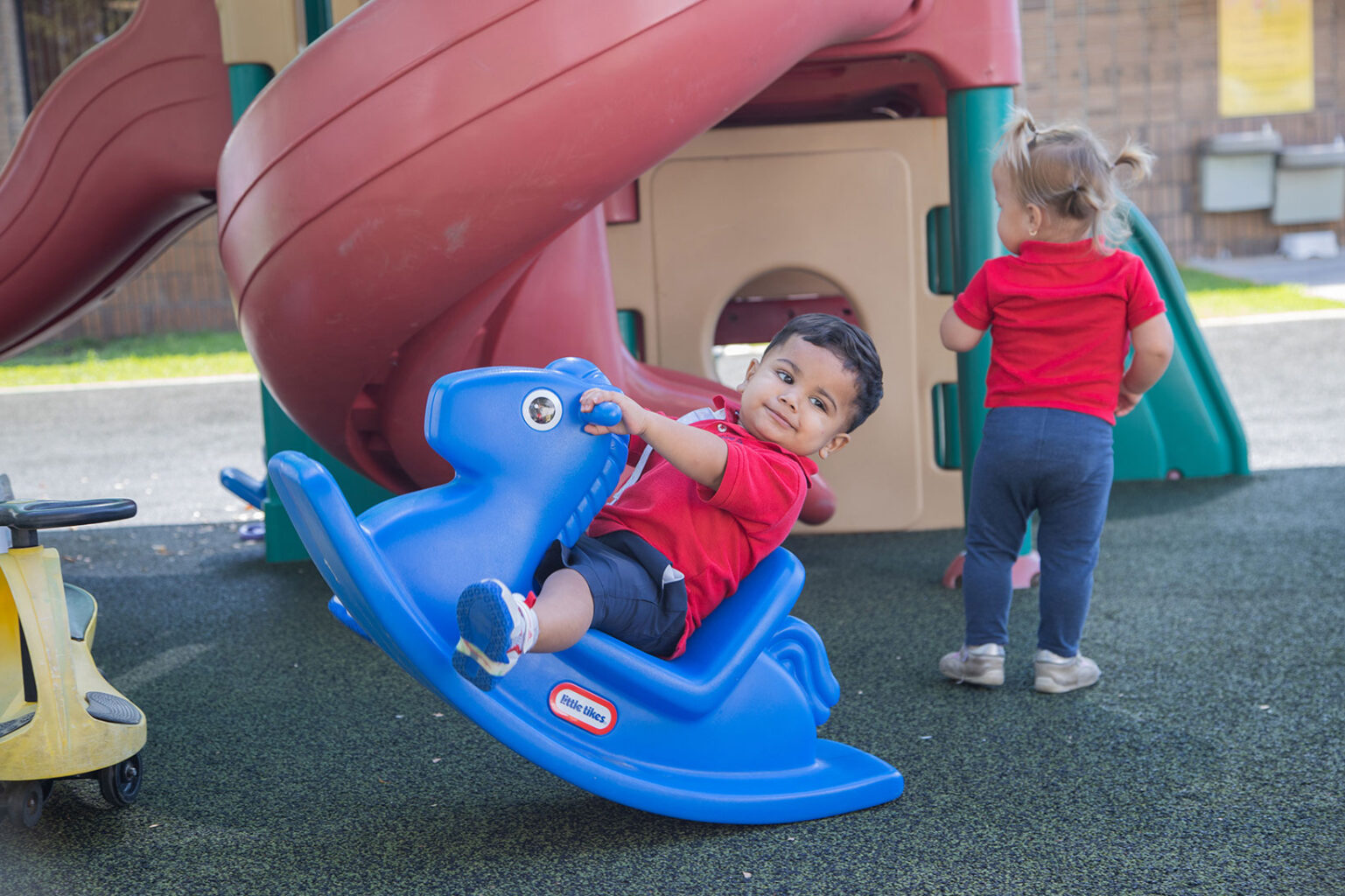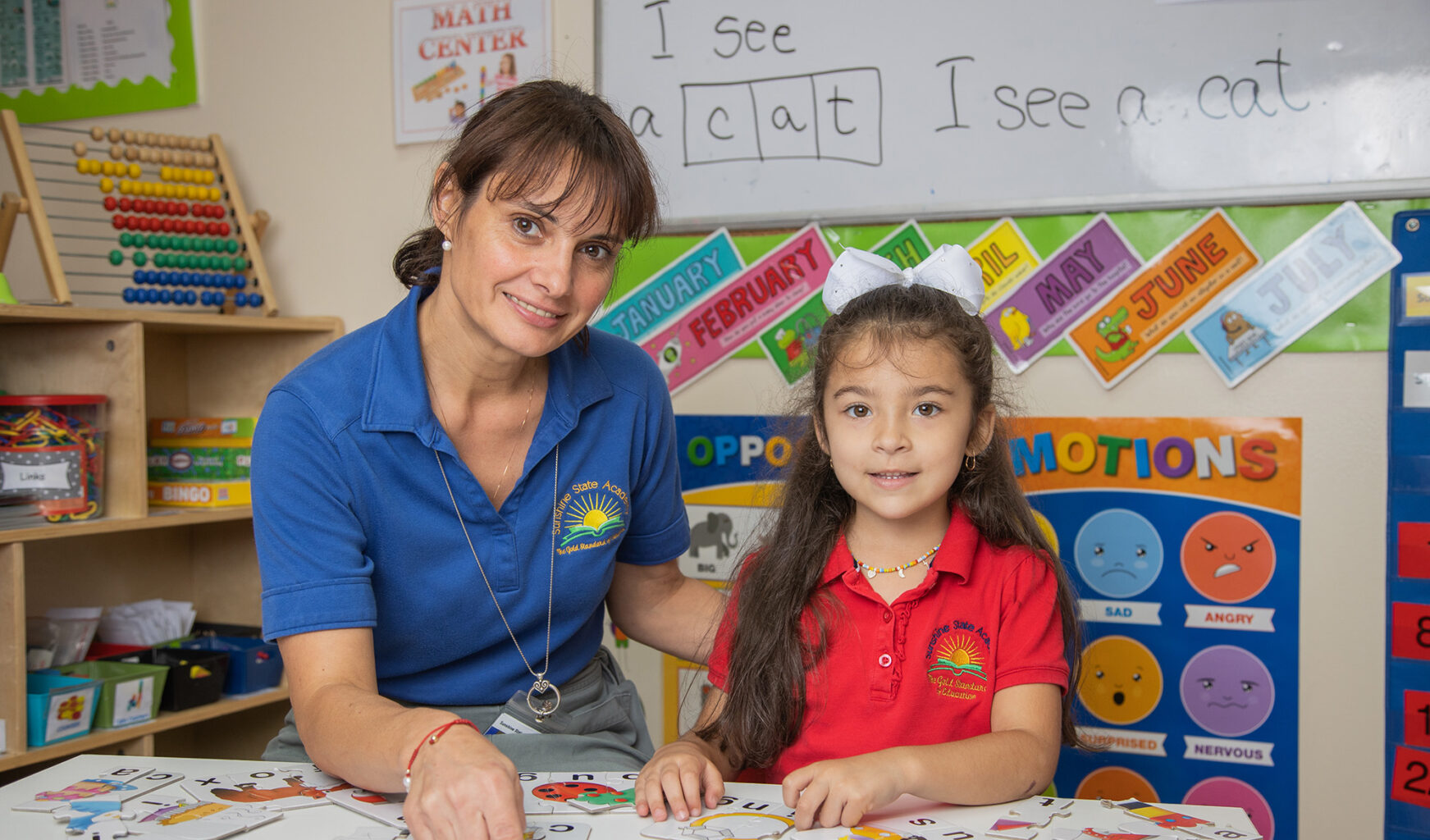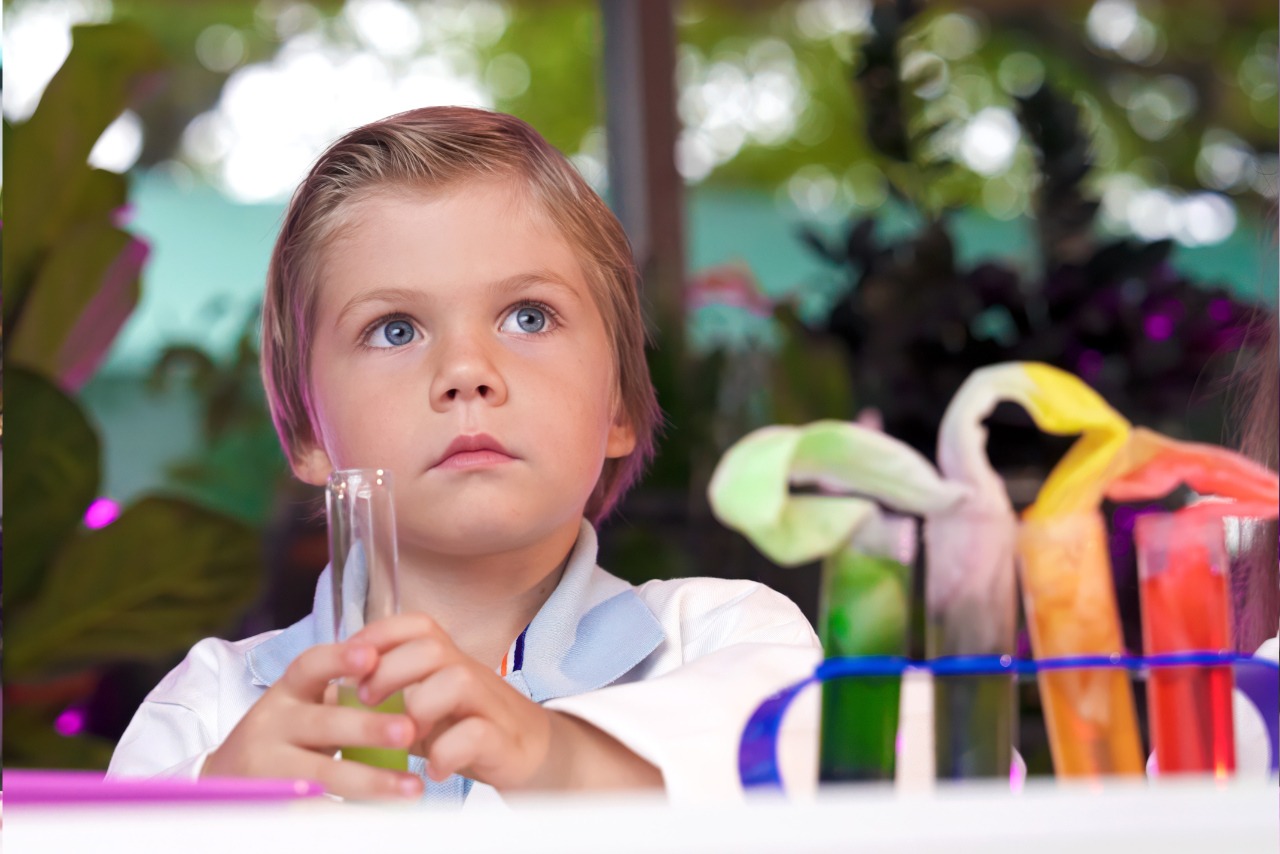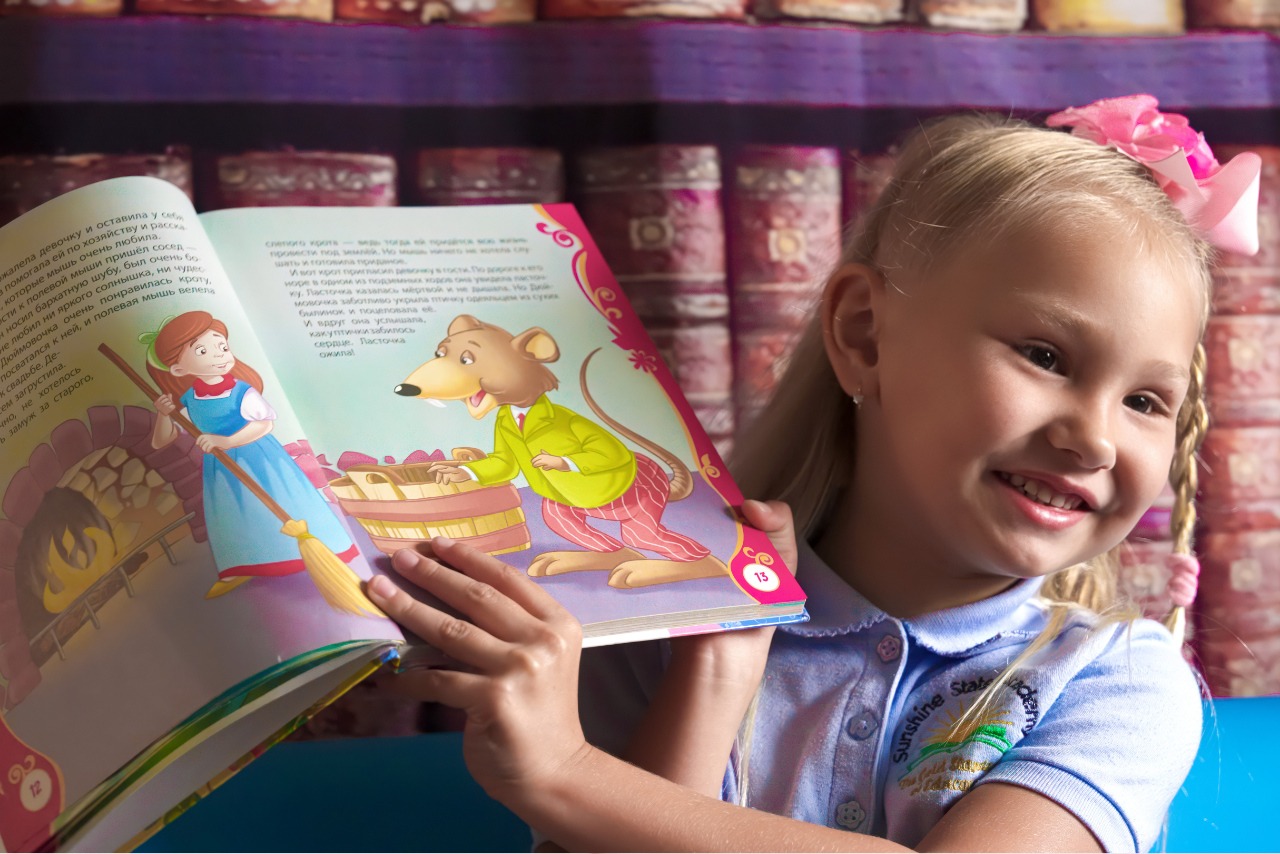Early childhood is a magical, foundational chapter in a child's life. We know parents are often overwhelmed by choices and want the best environment for their child's first years of learning and socializing.
At Sunshine State Academy, our preschool program is rooted in hands-on discovery, individual attention, and a joyful, creative curriculum. Our teachers nurture each child's natural curiosity, supporting social, emotional, and academic growth in a safe, caring space.
Our Preschool Age Groups

Young Toddlers
Ages 1-2 Years Old
Activities and lessons are age-appropriate and hands-on for our young toddlers. Teachers through the Creative Curriculum Model promote language acquisition and social and emotional development for our youngest learners. Classes follow a schedule which include language immersion, art, music, fine and gross-motor developmental during the day full of play!

Preschoolers
Ages 2-4 Years Old
Learning is constructed on prior knowledge based on the unique learning styles of each child, as shown by the Vygotsky Methods of Education. Learning through play is vital for this age group and is a crucial part of understanding the development of the individual child. In these classes the curriculum is based on the Creative Model which promotes individualized instruction based on the Early Developmental Sunshine State Standards.

Pre-Kindergarten
Ages 4-5 Years Old
The transition into kindergarten includes activities that focus on pre-reading development, phonics, logical-mathematical skills, writing, science exploration and classes in the creative arts. The Sunshine State Academy Creative Curriculum will ensure that your child is ready for his/her first year in kindergarten. Our school supports the VPK (Voluntary Prekindergarten) program. For more details Click Here


Explore our Preschool Curriculum
REGULATES OWN EMOTIONS AND BEHAVIORS
- Manages feelings
- Follows limits and expectations
- Takes care of own needs
ESTABLISHES AND SUSTAINS POSITIVE RELATIONSHIPS
- Responds to emotional cues
- Interacts with peers
- Makes friends
PARTICIPATES COOPERATIVELY IN GROUP SITUATIONS
- Balances needs and rights of self and others
- Solves social problems
DEMONSTRATES TRAVELING SKILLS
DEMONSTRATES BALANCING SKILLS
DEMONSTRATES GROSS-MOTOR MANIPULATIVE SKILLS
DEMONSTRATES FINE-MOTOR STRENGTH & COORDINATION
- Uses fingers and hands
- Uses writing and drawing tool
LISTENS TO AND UNDERSTANDS INCREASINGLY COMPLEX LANGUAGE
- Comprehends language
- Follows directions
USES LANGUAGE TO EXPRESS THOUGHTS AND NEEDS
- Uses an expanding expressive vocabulary
- Speaks clearly
- Uses conventional grammar
- Tells about another time or place
USES APPROPRIATE CONVERSATIONAL AND OTHER COMMUNICATION SKILLS
- Engages in conversations
- Uses social rules of language
DEMONSTRATES POSITIVE APPROACHES TO LEARNING
- Attends and engages
- Persists
- Solves problems
- Shows curiosity and motivation
- Shows flexibility and inventiveness in thinking
REMEMBERS AND CONNECTS EXPERIENCES
- Recognizes and recalls
- Makes connections
USES CLASSIFICATION SKILLS
USES SYMBOLS AND IMAGES TO REPRESENT SOMETHING NOT PRESENT
- Thinks symbolically
- Engages in sociodramatic play
DEMONSTRATES PHONOLOGICAL AWARENESS
- Notices and discriminates rhyme and alliteration
- Notices and discriminates smaller and smaller units of sound
DEMONSTRATES KNOWLEDGE OF THE ALPHABET
- Identifies and names letters
- Letter sound knowledge
DEMONSTRATES KNOWLEDGE OF PRINT AND ITS USES
- Uses and appreciates books
- Uses print concepts
COMPREHENDS / RESPONDS TO BOOKS & TEXTS
- Interacts during read-alouds
- Retells stories
DEMONSTRATES EMERGENT WRITING SKILLS
- Writes name
- Writes to convey meaning
USES NUMBER CONCEPTS AND OPERATIONS
- Counts
- Quantifies
- Connects numerals with their quantities
EXPLORES / DESCRIBES SPATIAL RELATIONSHIPS AND SHAPES
- Understands spatial relationships
- Understands shapes
COMPARES AND MEASURES
- Uses size words or gestures to describe objects.
- Compares sets of objects.
- Explores two objects by making direct comparisons.
DEMONSTRATES KNOWLEDGE OF PATTERNS
- Order three to five objects
- Recognizes patterns in the environment
- Recognizes a simple AB pattern
USES SCIENTIFIC INQUIRY SKILLS
- Identifies sense organs
- Use senses to observe
THE CHARACTERISTICS OF LIVING THINGS
- Plants, animals and their environments
THE PHYSICAL PROPERTIES OF OBJECTS AND MATERIALS
- Identify physical properties and state of matter of objects or materials
EARTH’S ENVIRONMENT
- Properties of water, rocks, soil, sand and mud
USES TOOLS AND OTHER TECHNOLOGY TO PERFORM TASK
- Use of simple tools and equipment for observing and investigating
- Explores and identifies simple machines
DEMONSTRATES KNOWLEDGE ABOUT SELF
- Identifies family traditions, celebrations, songs, food or language
- Characteristics of self as an individual
SHOWS BASIC UNDERSTANDING OF PEOPLE AND HOW THEY LIVE
- Responds to the needs of others
- Community
- Occupations
EXPLORES CHANGE RELATED TO FAMILIAR PEOPLE OR PLACES
- Identify own personal space
DEMONSTRATES SIMPLE GEOGRAPHIC KNOWLEDGE
- Explores own environment
- Recognizes basic landmarks or land features
- Maps, globes or GPS
EXPLORES THE VISUAL ARTS
EXPLORES MUSICAL CONCEPTS AND EXPRESSION
EXPLORES DANCE AND MOVEMENT CONCEPTS
EXPLORES DRAMA THROUGH ACTIONS AND LANGUAGE
Ready to see the Sunshine difference?
Connect with our admission team or schedule a personal tour-we'd love to meet your family!
